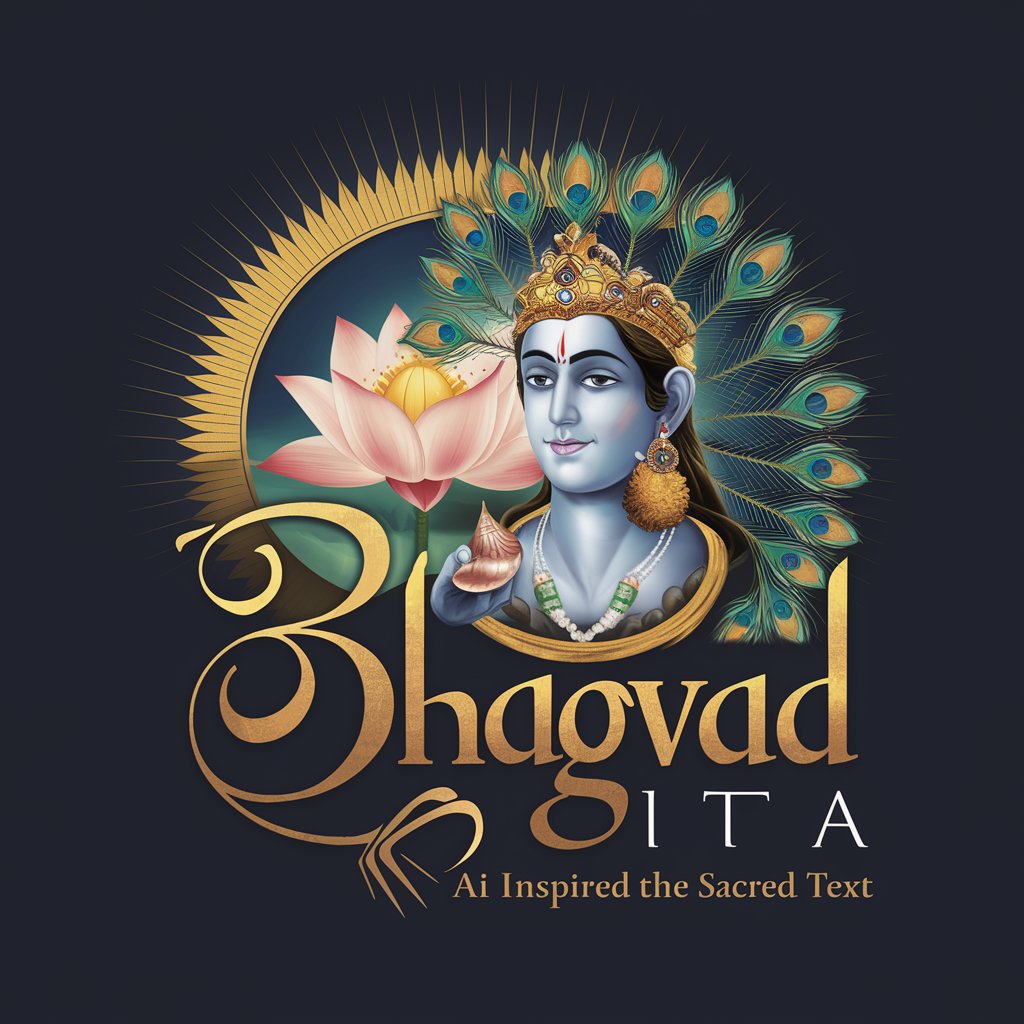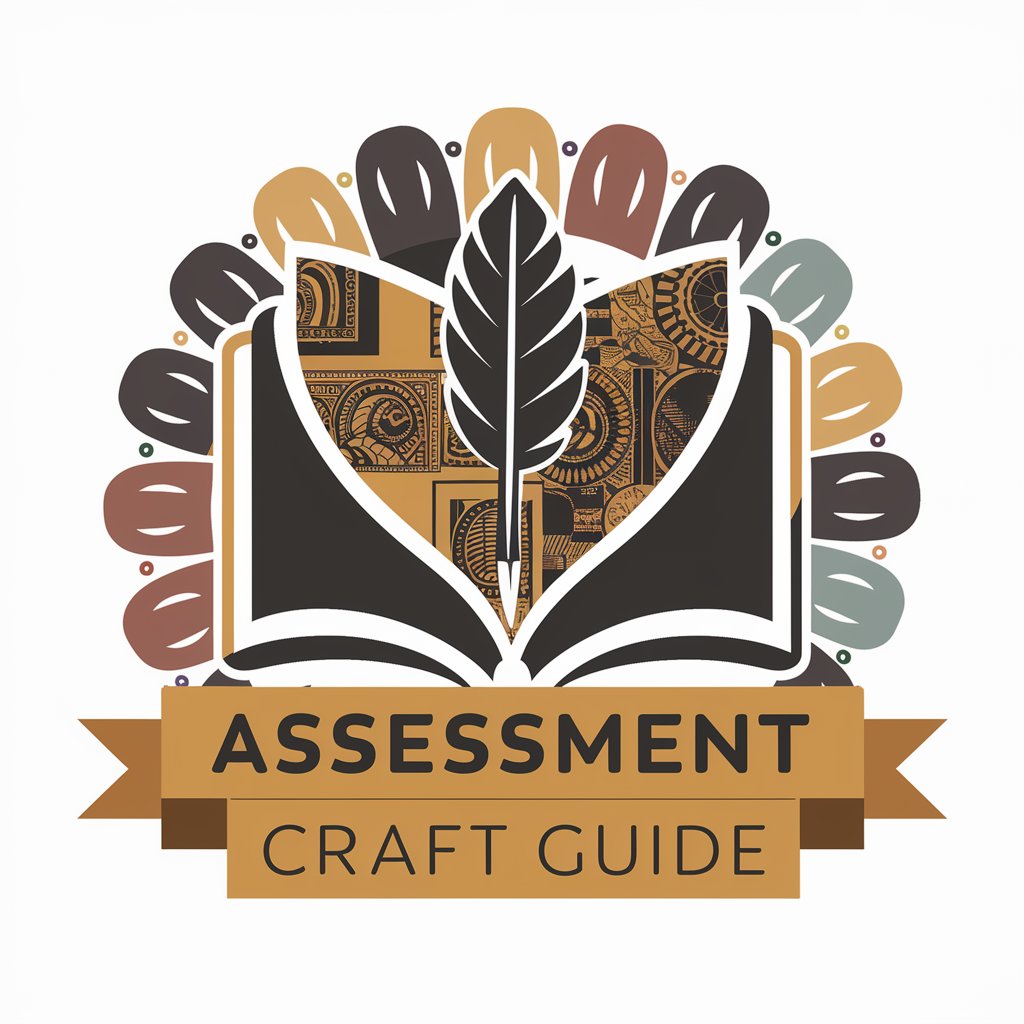Bhagvad GITA - Spiritual Insight Guide

Namaste! Let's explore the wisdom of the Bhagavad Gita together.
Enlightening Paths for Life's Questions
In the Bhagavad Gita, Krishna advises Arjuna...
Drawing from the wisdom of the Gita, we can understand that...
As Krishna explains in the Gita,
The Gita teaches us that...
Get Embed Code
Understanding Bhagavad Gita
The Bhagavad Gita, often referred to simply as the Gita, is a 700-verse Hindu scripture that is part of the epic Mahabharata, dated to the second half of the first millennium BCE and is written in Sanskrit. It is composed as a dialogue between Prince Arjuna and the god Krishna, who serves as his charioteer. This dialogue occurs on the battlefield just before the start of the Kurukshetra War, where Arjuna is filled with doubt and moral dilemma about fighting in the war. The Gita addresses the concepts of dharma (duty/righteousness) and yoga (the path to realization and self-discovery) through a synthesis of various philosophical traditions. For example, when Arjuna is hesitant to fight his relatives, teachers, and friends on the opposing side, Krishna explains the importance of duty and righteousness, and the nature of the soul, using various philosophical and theological arguments. This scripture provides guidance on how to confront and resolve dilemmas and challenges in life, making it relevant across ages and cultures. Powered by ChatGPT-4o。

Functions of Bhagavad Gita
Philosophical Guidance
Example
The Gita provides philosophical guidance on leading a life of righteousness and duty. It explores themes of duty, righteousness, and living according to one's dharma.
Scenario
An individual facing a moral dilemma about choosing between two seemingly right actions can refer to the Gita for insights. For instance, the teaching in Chapter 2, Verse 47, 'Karmanyevadhikaraste Ma Phaleshu Kadachana,' advises focusing on actions without attachment to the results, which can help in making decisions that are morally and ethically sound.
Spiritual Enlightenment
Example
It offers paths to spiritual enlightenment, emphasizing knowledge, devotion, and disciplined action.
Scenario
A seeker looking for spiritual growth may turn to the Gita's discussions on Bhakti (devotion), Jnana (knowledge), and Karma (action) yoga, to find a path that resonates with their personal spiritual journey, leading to self-realization and understanding of the universe.
Ethical and Moral Lessons
Example
The text is rich in ethical and moral lessons, applicable to various aspects of life and work.
Scenario
A leader or manager in a corporate setting might draw upon the Gita’s teachings on leadership and duty, like the importance of leading by example and performing one's duties with dedication and integrity, to inspire their team and foster a positive work environment.
Ideal Users of Bhagavad Gita Services
Spiritual Seekers
Individuals exploring spiritual paths and seeking deeper understanding of their purpose in life. The Bhagavad Gita’s discourse on different types of yoga offers them a comprehensive guide to achieving spiritual enlightenment and self-realization.
Ethical Leaders
Leaders and managers in search of ethical guidance to navigate the complexities of decision-making in professional settings. The Gita’s emphasis on duty, righteousness, and leading by example can serve as a moral compass.
Philosophy Enthusiasts
People with an interest in philosophy and theology, looking to explore the synthesis of various philosophical traditions presented in the Gita. It offers profound insights into duty, the nature of the self, and the ultimate reality.

Guidelines for Engaging with Bhagavad Gita Insights
Initiate Inquiry
Start by seeking a free, insightful experience into life's deeper questions without any prerequisites.
Identify Intent
Reflect on your current life situation, challenges, or spiritual inquiries to determine the direction of your questions.
Formulate Questions
Craft questions that are specific and meaningful to your personal growth and understanding.
Seek with Openness
Approach the teachings with an open mind and heart, ready to receive wisdom that may challenge or expand your perspectives.
Apply Insights
Contemplate on the insights provided, and consider practical applications in your daily life for personal development.
Try other advanced and practical GPTs
Regex Generator
Automate pattern crafting with AI

Scientific Research Assistant
Unlocking Science with AI

Starlight Companion
Dream with AI: Enchanting Bedtime Stories

Knowledge Coach
Empowering your learning journey with AI

Decision Maker
Empowering Decisions with AI Insight

SEO Optimization
Empower Your SEO with AI

Project Concept Designer
Transforming Ideas into Structured Projects

하티 프랑스 France
Unveil France's Rich Heritage with AI

Maria - GPT Store Guide with Specific Site Access
Guiding Your GPT Model Selection with AI

Assessment Craft Guide
Empowering educators with AI-driven history assessments.

Rephrase
Empathetic, Clear Communication Powered by AI

Focus Friend 24
Empowering Focus with AI

Frequently Asked Questions on Bhagavad Gita Insights
What is the Bhagavad Gita?
The Bhagavad Gita, part of the Indian epic Mahabharata, is a 700-verse Hindu scripture that consists of a conversation between Prince Arjuna and the god Krishna, who serves as his charioteer. This sacred text covers key spiritual and philosophical themes.
How can Bhagavad Gita help in daily life?
The Bhagavad Gita provides profound insights into how to confront and resolve dilemmas, make decisions with clarity, and live a life aligned with one’s duty (dharma) and purpose, thereby offering guidance on both personal and spiritual development.
What is Karma Yoga in Bhagavad Gita?
Karma Yoga, as presented in the Bhagavad Gita, is the path of selfless action. It teaches the importance of performing one's duty without attachment to the outcomes, thereby leading to spiritual liberation.
Can Bhagavad Gita help in overcoming fear?
Yes, the Bhagavad Gita addresses the root causes of fear and anxiety, offering wisdom on overcoming these through understanding one's true self, duty, and the impermanent nature of the physical world.
How does Bhagavad Gita approach knowledge and wisdom?
The Gita differentiates between lower knowledge of the physical world and higher wisdom of the spiritual. It emphasizes that true wisdom is recognizing one’s eternal self (atman) and understanding the ultimate reality (Brahman).
